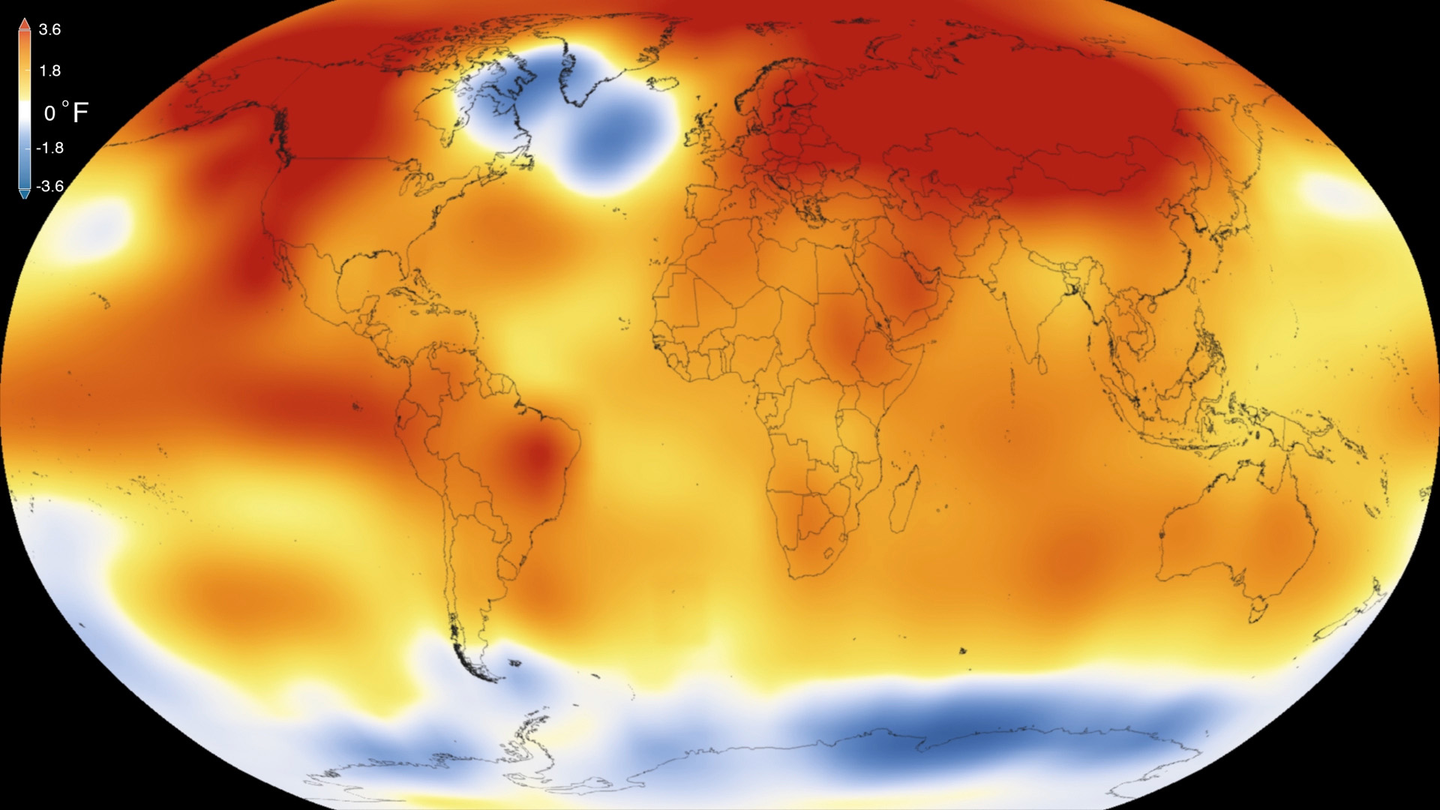Scientists discover the cause of Atlantic Ocean’s mysterious cold spot
A weakening ocean current, AMOC, explains the unusual cold spot south of Greenland, influencing climate patterns and marine life globally.

While most oceans around the globe steadily warm, the region south of Greenland has stubbornly cooled, creating a noticeable cold spot. (CREDIT: CC BY-SA 4.0)
For over a century, scientists have noticed something unusual in the North Atlantic Ocean. While most oceans around the globe steadily warm, the region south of Greenland has stubbornly cooled, creating a noticeable cold spot.
After years of debate, researchers from the University of California, Riverside have identified the likely culprit behind this puzzling anomaly—a slowing of the Atlantic Meridional Overturning Circulation, or AMOC.
Understanding the Ocean's Conveyor Belt
The AMOC acts as a vast underwater conveyor belt, continuously carrying warm, salty surface waters from the tropics northward. As it reaches colder northern regions, the water cools, sinks, and moves back south at deeper depths. This flow plays a crucial role in regulating Earth's climate, especially across North America and Europe. It influences weather patterns, rainfall, and even marine ecosystems, making its health vital for global climate stability.
Scientists have long suspected the AMOC was slowing down, a theory supported by reconstructions of past climate conditions. But direct measurements of AMOC strength exist only for about two decades. Thus, confirming long-term trends required creative solutions and indirect evidence, leading researchers Wei Liu and Kai-Yuan Li to investigate historical ocean temperature and salinity data.
Cooling and Freshening: Key Indicators
To solve this century-old mystery, Liu and Li examined over 100 years of ocean records. These extensive observations revealed a clear pattern: the cold spot south of Greenland, known as the North Atlantic Warming Hole (NAWH), consistently showed decreasing temperatures and reduced salinity.
The scientists reasoned that a slowdown of the AMOC would mean less warm, salty water traveling northward, resulting in cooler and fresher surface waters exactly where the NAWH appears.
Related Stories
“We found the most likely answer is a weakening AMOC,” explained Liu. The researchers backed this claim by comparing historical data with nearly 100 different climate simulations from international scientific projects like the Coupled Model Intercomparison Project (CMIP).
Their findings, recently published in the journal Communications Earth & Environment, revealed that only climate models predicting a weakened AMOC accurately matched the observed cooling and freshening trends. Models suggesting a stronger circulation, influenced by declining aerosol pollution, consistently failed to replicate the real-world data.
“It’s a very robust correlation,” Li said. “If you look at the observations and compare them with all the simulations, only the weakened-AMOC scenario reproduces the cooling in this one region.”
Why Does the AMOC Slow Down?
Identifying that the AMOC is weakening is one piece of the puzzle; understanding why it weakens involves complex interactions between oceanic and atmospheric factors. Historically, the AMOC's slowdown has been attributed to various causes, including shifts in wind-driven circulation, changes in storm patterns, and variations in the North Atlantic Oscillation—an atmospheric phenomenon influencing weather across the Atlantic.
However, none of these alone sufficiently explained the cooling pattern observed south of Greenland. The study demonstrated that changes in oceanic heat transport—specifically less warm water being carried north—played the most significant role.
Researchers estimated that the AMOC slowed between 1900 and 2005 by about 1 to 3 Sverdrups per century. One Sverdrup equals a million cubic meters of water moving per second, a massive volume capable of significantly altering regional climates.
Impacts Beyond Ocean Temperatures
A weaker AMOC doesn’t only mean colder ocean temperatures. This cooling directly affects climate patterns and ecosystems on a broader scale.
The NAWH influences the position and strength of the jet stream, a high-altitude wind pattern guiding weather systems across North America and Europe. Changes here can lead to shifts in rainfall patterns, impacting agriculture, water resources, and weather extremes like storms and droughts.
Marine ecosystems face disruptions too. Cooler, fresher waters alter habitats and species distributions, challenging fisheries and biodiversity management.
Settling the Debate and Looking Forward
The findings from Liu and Li's research also clarify disagreements among scientists. Previously, some newer climate models predicted a strengthening AMOC due to declining aerosol pollution. However, these newer models consistently failed to reproduce observed historical cooling. Liu and Li’s work confirms that the AMOC weakening better explains the century-long trend, highlighting weaknesses in current aerosol-sensitive models.
“Our results show that only the models with a weakening AMOC get it right,” Liu emphasized. "Many of the recent models are too sensitive to aerosol changes, and less accurate for this region."
Resolving this mismatch not only improves our understanding of past climate dynamics but also boosts confidence in future climate forecasts, particularly those affecting Europe. With accurate predictions, communities can better prepare for climate impacts like changing rainfall patterns, storm frequency, and ecosystem shifts.
A Powerful Approach for Climate Science
Though direct measurements of the AMOC extend only 20 years into the past, Liu and Li demonstrated that historical temperature and salinity data provide reliable indirect evidence. This method allows scientists to reconstruct long-term oceanic trends with confidence, offering a clearer window into past climate changes.
“We don’t have direct observations going back a century, but the temperature and salinity data let us see the past clearly,” said Li. "This work shows the AMOC has been weakening for more than a century, and that trend is likely to continue if greenhouse gases keep rising."
Looking ahead, if greenhouse gas emissions continue unchecked, the AMOC may weaken further. This could expand the influence of the North Atlantic cold spot, potentially intensifying climate impacts. Liu and Li's research underscores the importance of historical data analysis in predicting future ocean behavior, providing tools to help society better anticipate and adapt to climate changes.
“The technique we used is a powerful way to understand how the system has changed, and where it is likely headed,” Li concluded. With clearer knowledge, scientists and communities can better manage the impacts of global climate shifts, aiming to safeguard environments and societies worldwide.
Note: The article above provided above by The Brighter Side of News.
Like these kind of feel good stories? Get The Brighter Side of News' newsletter.



